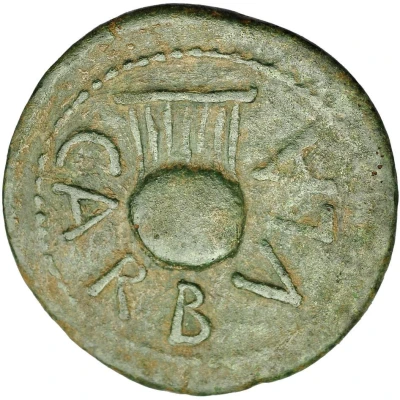


© Jesús Vico S.A.
As 200 BC - 176 BC
| Bronze | 32.4 g | 33 mm |
| Issuer | Carbula (Turdetani people) |
|---|---|
| Type | Standard circulation coin |
| Years | 200 BC - 176 BC |
| Value | 1 As |
| Currency | As (early 2nd century BC) |
| Composition | Bronze |
| Weight | 32.4 g |
| Diameter | 33 mm |
| Shape | Round (irregular) |
| Technique | Hammered |
| Demonetized | Yes |
| Updated | 2024-10-10 |
| Numista | N#314478 |
|---|---|
| Rarity index | 95% |
Reverse
Lyre.
Script: Latin
Lettering: CARBVLA
Comment
Seven piece known according to 1145, page 450.Interesting fact
One interesting fact about this coin is that it features a unique blend of Iberian and Roman influences in its design. The Turdetani people were a pre-Roman tribe that inhabited the region of Turdetania, which is now modern-day Spain, and their coinage often reflected their cultural exchange with neighboring civilizations. The Carbula coin, in particular, bears a resemblance to Roman Republican coins of the time, suggesting that the Turdetani people were influenced by Roman currency and economic practices. This blending of cultures is a fascinating aspect of ancient numismatics and highlights the complex web of trade and cultural exchange that existed in the ancient world.